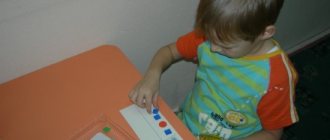Dyslexia is a fairly common phenomenon in which a person has difficulty reading. Such difficulties arise as a result of the special development and formation of mental functions of the brain. This feature most often begins to appear at early school age and can have various forms of expression. At the same time, any type of pathology can be corrected in various ways, one of the most effective of which is the Davis method.
Creator of a unique approach to the treatment of dyslexia
The author of the method, Ronald D. Davis, is a versatile personality. A sculptor, engineer and businessman, he founded the Reading Research Center in California, developing a revolutionary approach to treating dyslexia.
Despite all his talent and high level of intelligence, Davis experienced problems with reading since childhood, but this did not prevent him from achieving success in life. Moreover, by the age of 38, he was able to overcome his main vice, easily reading a book in just a few hours. Having seen the fruits of his labor, Ronald began to develop the author's approach and put it into practice when working with other people with similar pathologies. Today, his book “The Gift of Dyslexia” has been translated into many languages and is a real manual for the treatment of this disorder, the correct use of which brings a positive effect in almost 99% of cases.
Definition and types of dyslexia
Dyslexia is a disorder in the development of reading skills, caused by underdeveloped mental functions that take part in this process. A characteristic feature of dyslexia is repeated persistent deviations in the reading process:
- mixing and replacing sounds;
- letter-by-letter reading;
- reversal of syllables;
- difficulty composing or understanding complex sentences;
- misunderstanding of the meaning of what is read.
Dyslexia is called the problem of geniuses. Winston Churchill, Hans Christian Andersen, Albert Einstein, Walt Disney, George Bush, Quentin Tarantino suffered from this disease
Dyslexia is often called the problem of geniuses. Celebrities such as Winston Churchill, Hans Christian Andersen, Albert Einstein, Walt Disney, George W. Bush, Quentin Tarantino and others suffered from this disease. But, of course, not everyone with dyslexia becomes a genius.
To diagnose dyslexia, it is necessary to assess the level of developed spoken language, grammatical skills, reading, attention, thinking and memory. Dyslexia can be overcome by developing all of the above skills. Therapy is aimed at:
- correct pronunciation of sounds;
- sentence construction;
- development of coherent speech.
According to statistics, the number of students with developed intellectual thinking who have signs of dyslexia is 4.8%. Schoolchildren who have severe speech problems and who have mental retardation are susceptible to dyslexia in 20-50% of cases. In boys and girls, the disorder occurs in a ratio of 4.5 to 1.
Types of dyslexia
Based on the form of defective reading, speech therapy distinguishes two types of disorders:
- Dyslexia - reading skill is partially impaired.
- Alexia is the inability to master reading or complete loss of skills.
If dyslexia is not corrected in a timely manner, children may develop low self-esteem and depression.
These problems arise separately and precede the development of dysgraphia. If dyslexia is not corrected in a timely manner for children and primary schoolchildren, they may develop low self-esteem and depression, and they will also be characterized by bad behavior.
Based on external signs, the following types of dyslexia are distinguished:
- Literal - characterized by partial assimilation of some letters.
- Verbal - characterized by a problem reading words.
Taking into account impaired mental functions and mechanisms, the main types of dyslexia are distinguished:
- Phonemic - characterized by unformed phonemic understanding, synthesis and analysis.
- Semantic - characterized by underdevelopment of syllabic integrity, a poor vocabulary, and the inability to establish connections between words.
- Agrammatic - appears due to underdeveloped written speech, lack of skills to conduct morphological and functional synthesis.
- Mnestic - formed due to memory impairments associated with speech, difficulties in the relationship of letters and sounds.
- Optical - occurs when optical concepts are underdeveloped.
- Tactile - manifests itself along with unclear tactile perception in children with poor vision.
Examples:
- saw - linden;
- clear day,
- sitting;
- com - tom - house;
- beautiful vase;
- cow - carpet.
Based on the above list, underdeveloped speech functions provoke the appearance of phonemic, semantic and agrammatic dyslexia; and ZPR becomes the cause of mnestic, optical and tactile.
What is the essence of the Davis technique?
Corrective work using this approach cannot be compared or contrasted with the therapy offered by official medicine. Dyslexics in this case are not considered as diseases, but as people with a distinctive visual way of thinking. Of course, they have a rich imagination and vivid perception. At the same time, their way of understanding the world around them differs from the generally accepted one. When creating certain images in their imagination, dyslexics experience difficulties and become disoriented in space, as a result of which they cannot correctly complete the thought process.
The Davis method is designed to turn off disorientation and set up a fixed “point of orientation” to counter it. Thus, a person’s attention and imagination is focused on creating realistic images in accordance with the words written on paper.
This approach in most cases helps to control dyslexia, regardless of the age of the person with the pathology. The methodology includes a set of measures that can be divided into 8 stages. Let's take a closer look at each of them.
Medical intervention
Since dyslexia is associated with immaturity of brain structures, the doctor may prescribe vitamins and nootropic drugs that improve the function of nervous tissue. Drug therapy is always individual, taking into account the speed of development of the baby.
A promising treatment method is micropolarization (TCMP). This method has been tested over a long period of time (about 30 years) and is characterized by high therapeutic effectiveness.
Micropolarization is the effect of a weak (up to 1 mA) electric current on certain areas of the brain. An EEG cap (testile) is placed on the child’s head, and positive and negative electrodes wrapped in a damp cloth are placed under it. The current used is unipolar (flows from plus to minus, from anode to cathode). Under the influence of current, directional polarization of cell membranes occurs, and their enhanced development begins.
The child does not feel anything during the procedure. The full effect of treatment unfolds within 2 to 6 months.
It is advisable that a specialist who develops fine motor skills work with the child at the same time.
Assessing Perceptual Ability
The first step is to identify the most vulnerable area of dyslexia. For example, children often worry about ridicule from peers or low self-esteem. It is extremely important to identify the psychological consequences of pathology and carry out competent corrective work with them. Only after this the specialist reveals the degree of difficulties with perception.
Exercise. The child is asked to imagine a certain object on his own palm. To help a dyslexic person create a holistic image, the specialist asks leading questions: “What color is the object? What is its shape? Size? Weight?”, and also offers to change the parameters of an imaginary thing, increase or decrease it, transfer it to the other hand, etc.
The practice is aimed at using the so-called “mental eye”, which allows you to build a realistic model of the surrounding world in your imagination. When a dyslexic can easily perform this exercise, you can move on to the next stage of correction.
How can you help at home?
Home correction consists of several important points.
Development of phonemic awareness
This is the ability to perceive the sound composition of a word. You need to purchase (or make yourself) cards with all the letters and play “words” with your child as often as possible. The mother pronounces the word, and the child tries to form it out of letters. The game needs to be immediate and lively. For example, collect the name of an animal that was seen at the zoo, or a cartoon character. It is advisable to master words gradually, 1 or 2 per day. If you do this constantly, your baby's vocabulary and ability to read will improve over and over again.
The concept of grammar and semantics
Grammar is the change of words in a sentence, their consistency (yellow leaf, orange carrot).
Semantics - recognizing the semantic meaning of a word (it is raining, although the natural phenomenon has no legs).
The best exercises are listening to fairy tales at a slow pace, when all words and expressions are pronounced clearly, legibly, and emphasized by intonation. The child will inevitably imitate what he hears. Any word that causes confusion or misunderstanding should be explained in detail.
Increasing vocabulary
A child’s thinking is always concrete. He cannot talk about what he has not seen and “tested.” Therefore, you need to increase your vocabulary by showing objects and concepts and talking about them. You need to tell in as much detail as possible. So, using the example of a simple pan, you can talk about metal, circle, pattern, volume.
Articulation exercises
There are many tutorials on the Internet and bookstores on the topic of fun articulation. You can practice according to any publication, the exercises are the same type - hamster (puff out your cheeks), smile, donut, proboscis and the like. It’s better to turn any activity into a game. It is better to start exercises with a speech therapy massage, which “warms up” the muscles of the cheeks and tongue. The duration of the lesson is no more than 5 minutes, otherwise the child will lose interest.
The joint work of specialists and parents always improves the situation and contributes to the formation of correct and clear speech in the child. Take care of your baby’s successful future, sign up for a consultation with a speech therapist right now!
Switching
To obtain accurate images in the imagination of a dyslexic, it is necessary to teach him to turn off the disorientation that occurs every time he begins to create images that do not coincide with the prescribed information. To do this, Davis proposes creating an “orientation point” - a certain space in which a person mentally fixes vision and consciousness.
Exercise. The dyslexic is asked to imagine a straight line that extends from an object presented on the palm, passes through the tip of the nose and exits through the back of the head. The line ends approximately 20 cm above the occipital part - this is where the “orientation point” is located. Otherwise, the child can be asked to imagine that his consciousness is transferred to the person standing behind him.
Once the image of the “orientation point” is fixed in the dyslexic’s head, the need for detailed visualization of the line emerging from the object will disappear. In turn, the child will be able to control disorientation and receive the image in the form in which other people see it.
Causes of dysgraphia
Thanks to the diagnosis of dysgraphia using the Davis method, you can already understand the true causes of “bad” handwriting at the first consultation. There may be several main reasons:
- organic brain damage, including genetic;
- various diseases, developmental defects (for example, previous meningitis, encephalitis, severe somatic pathologies, birth injuries, etc.);
- lack of training process or its inadequacy. In this case, there may not be a diagnosis of dysgraphia; the child simply missed a lot, was not taught, and does not have the necessary skills. A course of correction for this condition will correct everything;
- deliberately uneven handwriting: may not be a consequence of dysgraphia, but may hide other problems. You need to look for the reasons for clumsy handwriting and work on it. Usually, after a course of treatment for dyslexia and attention deficit disorder, the problem of uneven handwriting goes away;
- disorientation, distortion of reality: inherent in a child with a rich imagination. During lessons, he is simply in some kind of his own reality, not perceiving what is happening around him;
- multiplicity of images;
- congenital misalignment.
Discharging and checking
When a dyslexic gets into a state of disorientation, the process of creating a “point of orientation” and maintaining it for a long time takes a lot of effort. Many people begin to feel headaches or even feel excessive muscle tension in the neck. In order not to lose control of the “mental eye” and get rid of discomfort, it is necessary to discharge.
Exercise. A dyslexic person is encouraged to use their imagination to create a feeling of calm and relaxation that spreads not only throughout the body, but also reaches an “orientation point.”
With constant training, neck tension and headaches will go away very quickly. After this exercise, you need to make sure that the mind's eye is at the same fixed point. To do this, the dyslexic simply needs to point his finger at the place where his “orientation point” is located. If the point is determined correctly, the test can be considered successful. If not, you should re-place it in the correct place. It is necessary to move on to the next stage after a person has mastered the skills of discharge and verification.
The essence of D. Davis's method
Ronald Davis, author of The Gift of Dyslexia and The Gift of Learning, has suffered from dyslexia since childhood and knows firsthand the difficulties that children with this diagnosis face. Poor performance at school, constant problems communicating with peers, their bullying and ridicule, dissatisfaction and disappointment from teachers and parents - all this awaits someone born dyslexic.
Davis proved that dyslexia is not a defect, but a set of innate abilities that you need to learn to manage. Hardly anyone considers these talented people stupid and underdeveloped: Winston Churchill, G.H. Andersen, Leonardo da Vinci, Nelson Rockefeller, Keanu Reeves, Agatha Christie, Steve Jobs, A. Einstein. But these are examples of individuals with dyslexic disorders.
Therefore, if asked how to cure dyslexia, Davis would answer something like this: “Dyslexia is a great gift. It doesn’t need to be treated, it just needs to be corrected so that this feature only brings benefits.”
By observing himself and other gifted people, Davis was able to identify the internal source of all the problems of dyslexics - disorientation. It is this that gives them the opportunity to see objects in volume, to easily study mechanisms that are incomprehensible to most people, and to think figuratively. But at the same time, it interferes with free reading and handwriting: people with dyslexia find it difficult to perceive flat information, recognize, and reproduce symbols and words from ordinary book pages.
The basis of Ronald Davis's technique is to turn off disorientation and move the “epicenter of perceptions” (mental eye) of a dyslexic to the optimal “point of orientation.” After gaining the ability to control their consciousness, children with dyslexia learn to read using 3D models of symbols, words and plots that they understand.
The Davis method, as applied to each student, involves going through the following stages:
- Preparatory - includes goal setting, the formation of motivation and responsibility, the concept of an “energy scale”.
- Adjustment of consciousness. Consists of sections: assessment of perception ability, switching, discharge, fine tuning, coordination tuning.
- Mastering symbols and reading techniques.
Settings
At the beginning of therapy, the “orientation point” of a dyslexic person is quite unstable, so it is very important to teach how to accurately determine its location. Only the ability to accurately adjust the optimal point will allow you to control disorientation and manage dyslexia in general.
To adjust the location of the point, you need to mentally move the "mental eye" around the intended "orientation point." In this way, the child will be able to identify the optimal arrangement of these concepts. Having found the necessary point, the dyslexic should fix it using an imaginary anchor.
Coordination
Children with dyslexia have difficulty coordinating their movements and correctly identifying their left and right sides. To get rid of clumsiness and confusion, special exercises that must be performed after successfully identifying and tuning the “mental eye” will help.
Exercise. The child stands on one leg and balances on it, maintaining balance. Having established balance, he needs to catch small balls, doing this alternately with each hand, and then with both at the same time. At the next stage, the ball is thrown with a slight deviation in order to complicate the task and provoke the dyslexic to go beyond the established axis of balance.
Plan of the education
The Davis program is 30 hours of intensive work carried out individually with each child, 6 hours a day for five days in a row.
The program is administered by a licensed Davis Supervisor and is tailored to the needs of each individual student.
Over the course of 5 days of completing the program, the student acquires new skills. In the future, it is expected that he will continue to work from home with an assistant.
The program involves three follow-up appointments, which typically occur at six weeks, three months and six months after completion of the 5-day program.
Our students are not required to take any medications while participating in the program (in consultation with their physician).
Mastering symbols
The imagination of dyslexics is only capable of perceiving three-dimensional three-dimensional images. In turn, the reading process is based on understanding printed two-dimensional symbols, which makes learning insurmountably difficult for these children.
Exercise. The child is invited to create letters, numbers and other written characters from plasticine or clay. After this, it is necessary to compare the three-dimensional figure with its printed counterpart, determine its location in the alphabet or number order. It is necessary to move on to working with the next sign after the dyslexic has consolidated the previous symbol in his mind, can give examples with it, and understands the purpose of its use.
Causes and symptoms of dyslexia
There is still no general consensus about the causes of dyslexia in our time. Foreign speech therapists in their works describe the theory of genetic inheritance of reading and writing problems in people with a more active right hemisphere. Some scientists develop the idea that these problems appear in schoolchildren who write with their left hand.
Many researchers who carefully study dyslexia in primary schoolchildren point to the effects of pathological disorders that lead to minor brain dysfunction:
- brain deformation during childbirth;
- heart disease and maternal anemia during pregnancy;
- congenital heart defect of the newborn;
- placental insufficiency;
- impaired development of the umbilical cord;
- early placental abruption;
- difficult childbirth;
- suffocation of a newborn entwined in the umbilical cord.
In the process of child development, psychospeech development delay (PSRD) may occur, which leads to dyslexia with such damage:
- infectious diseases of the central nervous system;
- head injury;
- childhood diseases: chickenpox, polio, rubella;
- debilitating infections.
With alalia, dysarthria and aphasia, dyslexia is provoked by damage to certain brain areas. Children with mental retardation, serious speech defects, cerebral palsy, and mental retardation are susceptible to dyslexia.
The main social causes of dyslexia:
- lack of communication;
- child's privacy;
- neglect on the part of teachers and educators;
- negative communication environment;
- bilingualism (bilingualism);
- early education;
- fast pace of learning.
The beginning of dyslexia in schoolchildren is unformed spoken speech.
Symptoms
Let us describe the symptoms by type of dyslexia:
- Spoken speech dyslexia. Children make mistakes when pronouncing phonemes, misunderstand the meaning and use of words, and have a small vocabulary. They cannot correctly compose a sentence and connect words in it.
- Phonemic dyslexia. Characterized by the substitution and mixing of phonemes that are similar in articulation or acoustics. In other circumstances, words are replaced by changing, adding, or omitting phonemes and syllables.
- Semantic dyslexia. It is characterized by impaired comprehension of an accurately read text or word. A problematic change occurs during syllable and cursor reading.
- Agrammatic dyslexia. Incorrect reading of endings in words of all parts of speech, confusion in the correct construction of words in the required number and gender. Agrammatisms are present in spoken and written speech.
- Mnestic dyslexia. It manifests itself as impaired optical perception and pronunciation of letters. It is difficult for the student to remember the letters, so he replaces and mixes them up. A study of auditory and speech memory in schoolchildren with this problem showed that children cannot repeat a series of 4 sounds or words or analyze them.
- Optical dyslexia. It manifests itself in the fact that the student confuses and changes letters that are similar in appearance. This anomaly occurs if, when reading a text, a child jumps from one line to the second. Sometimes this can manifest itself as mirror type reading - the student reads from right to left.
- Tactile dyslexia. Blind people often make mistakes and replace letters when reading Braille. Students with these problems, while reading, move from one row to the next, miss letters and phrases, distort the semantic meaning of what they read, and are prone to chaotic hand waving.
Mechanism of manifestation of the disorder
The reading process is characterized by the involvement of optical, auditory and motor speech analyzers.
Reading stages:
- Optical perception, recognition and differentiation of letters.
- Correlation of letters with phonemes.
- Addition of phonemes into syllables.
- Combining syllables into a whole word.
- Grouping words into a sentence.
- Comprehension of the material read.
If these processes are disrupted, then, according to psycholinguistics, these are signs of dyslexia.
Psychologists consider dyslexia as a consequence of a delay in the development of functions in the fetus that ensure the reading process.
Dyslexic disorders are accompanied by underdevelopment of optical vision, poor orientation in space, poor perception of sound, altered construction of correct speech, improper visual and auditory coordination, poor concentration, weak will, and lack of control of emotions.
Sequential reading
Dyslexics perceive written information not letter by letter, but in a single, holistic way. When studying a word, such a child guesses what object or phenomenon it refers to. It is necessary to develop the skill of sequential reading, highlighting individual syllables and letters. Comprehension of the information read is not taken into account at the initial stage.
Exercise. Choose the simplest possible book and begin reading sequentially letter by letter and syllable. It is important to take breaks and check that the “orientation point” is located correctly.
The next step is to repeat the word read letter by letter and syllable, as well as explain its meaning. In the future, you should develop an understanding of not only individual words, but also entire sentences.
Main signs of dyslexia
The disorder is first diagnosed in children under 10 years of age. It is important that a child with dyslexia has fully intact intelligence, however:
when reading he makes mistakes because he guesses the words;
- does not understand well or cannot retell what he has read;
- makes many mistakes when copying or writing from dictation;
- has illegible handwriting;
- characterized by strong irritability and increased emotional background;
- the body diagram is disturbed (confuses right and left), clumsiness appears;
- holds the pen in an unusual way.
Experts associate these manifestations with disruption of the left hemisphere, as well as interhemispheric connections.








